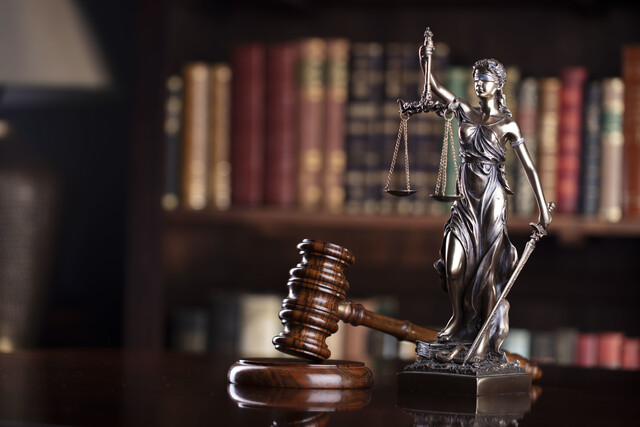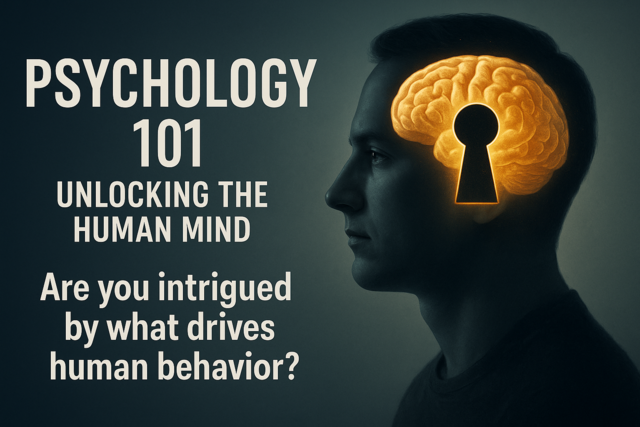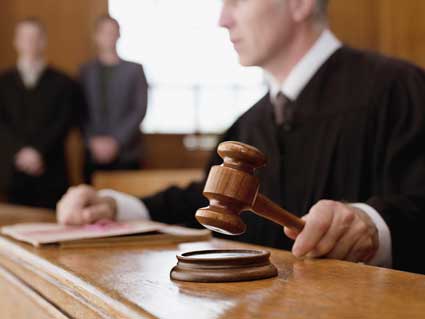Identifying Offenders, Helpers, Apologists, and Rule Benders
Many people view sexual harassment as a two-person relationship with a harasser or aggressor and a victim. However, there are often many other players involved and the relationship can expand to hold multiple people in multiple roles. This lack of recognition on some of those other roles and on the number of roles often makes it difficult for people to identify instances of sexual harassment in the workplace. For those who are seeking to help address and prevent it, this is a huge obstacle that needs to be addressed on its own. But how does one go about identifying each player?
This article will look at the different roles that may be present in any given case of sexual harassment and what may be involved with each one. These will include the offenders, helpers, apologists, and the rule benders. A brief explanation of the role that each one plays in an instance of sexual harassment will be included, as well as what kind of circumstances prompts their involvement.
It is difficult to identify the different players involved in sexual harassment if you do not know the features of the role they play. The offenders of sexual harassment are the most straightforward to define, as they are the ones that do sexual harassment in its many forms. The official EEOC guidelines identify sexual harassment as any kind of unwelcome sexual conduct like asking for sexual favors, sexual advances, statements, or physical contact that is sexual in nature. This can cover anything from sexual looks like staring at a women's breasts while she talks to sexual assault and/or rape. Any kind of unwanted, offensive, or objectionable behavior or conduct that can be interpreted or categorized as something sexual is considered sexual harassment.
When sexual harassment happens in the workplace, the atmosphere of the work environment can determine how it manifests. This doesn't necessarily help identify offenders unless you actually witness their behavior firsthand or find other evidence of it. But it does help in identifying that something is going on even if no one is speaking up.
As you may recall, there really is quite a bit that can be constituted as sexual harassment. Some examples include the following.
Asking or pressuring someone to go out on a date, especially when a person has repeatedly turned the asker down and/or has made it clear that they are uninterested.
Rumors of a sexual nature about someone. In some cases, it may be in response to the victim refusing the person's previous advances.
discussions involving sexual topics -- This can include talking about sex, making offensive or sexually-charged comments, telling stories that are sexual explicit, etc.
*requests or demands for sexual favors and actions -- This can be part of a quid pro quo situation or simply because the harasser expects the victim to willingly have sex with them when asked.
*touching of any kind -- This can be touching someone without their permission, no matter how non-sexual it seems like touching someone's arm or back. It can also be explicit like touching someone's chest or buttocks. In some cases, the harasser may touch themselves in a sexually explicit manner in the presence of their victim.
*overstepping the boundaries of personal space -- This can include hanging around a person for no clear reason, following them, standing too close to them, or even brushing up against them "accidentally" when near them.
*sexual and/or physical assault -- Rape is by far one of the most extreme examples of sexual harassment and many people do not think that it is something that can happen in the confines of the workplace. Unfortunately, that's not at all true. In addition to rape, physical assault tied to sexual conduct or behavior can also happen. This may be a severe reaction to a victim's refusal of their harasser's sexual advances and can occur in addition to rape or on its own.
As mentioned above, sexual harassment can also involve quid pro quo harassment. This is a form of harassment that isn't limited to sexual demands in exchange for favors and can also occur on its own. Identifying quid pro quo is relatively easy if you are one of the parties in a proposed quid pro quo arrangement. It's a combination of two components--the offer and the conditions. Neither can be tied solely to discriminatory elements regarding race, gender, age, disability, sexual orientation, nationality, ethnicity, religion, politics, status as in veterans, etc., or any other similar identifying information about someone. There does need to be a threat tied to the exchange, such as "do this or you're fired, demoted, etc." so long as what you are being told or ordered to do is not a part of your job duties and conditions. For example, your boss threatening to fire you if you're late to work doesn't count as quid pro quo harassment but threatening to fire you if you don't perform oral sex on them is.
What Makes An Offender?
Offenders are typically the easiest to define of the three roles that this lesson looks at. This is largely because next to the victim's, their role is the only other one that people are aware of. While most offenders are typically male, there are no specific demographic requirements that an offender must adhere to in order to be considered an offender. If they exhibit or have exhibited harassing behavior, they're an offender. It's a simple concept but some people still struggle in identifying offenders because of the way they behave publicly. The recent accusations of sexual harassment that have been coming out of Hollywood and other high-profile public spheres in recent years has shown that with many, they were very surprised about who was accused because of how the allegations strongly conflicted with their public image. However, there have been some who were not as surprised about who was accused based on how the person has behaved when there isn't an audience or a camera present.
So while there isn't a specific set of requirements for offenders, there are some notable traits that many of them share. As stated repeatedly, the majority of offenders are male and many of them are aware of their actions, meaning their behavior isn't accidental. However, women can also be offenders despite what most stereotypes suggest. Data on female perpetrators of sexual harassment and sexual violence is seriously lacking and understudied because of stereotypes and social beliefs regarding gender. About 38% of victims of all forms of sexual violence tend to be men and about 68.6% of the perpetrators in those instances were female. The data varies based on what the harassment and/or violence entailed and where it occurred, but it does show that what the public knows of offenders doesn't reflect the truth.
What Makes One a Helper or Apologist?
There is a concept regarding harassment and violence of all forms in which there are those who do not necessarily support the offender's actions but instead fail to speak out against it and sometimes even justify it based on circumstances. Those who do this are often referred to as helpers and apologists and they can be just as harmful as the offender and their actions. It is possible that you may have heard of or encountered someone who fits this description or possibly been one yourself at some point since this is a fairly common role. Instances of the bystander effect often can produce a helper or apologist but they are often a byproduct of social beliefs on harassment regarding rape culture.
Like with offenders, anyone can be an apologist and many are aware to some degree of their actions. They appear frequently in the conversation around sexual harassment and violence, regardless of where it occurs or who is otherwise involved. Apologists can include supporters of those accused, their colleagues and peers, those who are unaware of what sexual harassment is, those who are prejudiced, and other offenders. Surprisingly, there are apologists among those who identify themselves as supporters of victims of harassment and discrimination. However, they've fallen for myths and misconceptions regarding harassment and are hesitant to put aside their own beliefs and experiences in order to be objective.
Apologists and helpers often use their words to try and diminish claims of harassment or to justify what is happening. This is their most easily identifiable trait since many also use the same phrases and excuses regardless of the details of the situation.
outright denial -- This is often based on the image the person has of the accused and any kind of bias they may have against those involved in the situation. The accusation does not fit with the person's perceived image and the apologist interprets it as being impossible as a result. Many apologists deny that sexual harassment isn't even an issue, typically because they have not experienced it themselves and/or as a result of their cultural and social beliefs. This has been common in recent months with the #MeToo movement since there are those who dismiss victims' claims as being overblown and the behaviors of the accused as being acceptable.
victim blaming -- Victim blaming is a common deflective tactic among perpetrators of sexual harassment and violence, usually as a means of justifying or excusing their own actions. The concept basically involves placing the blame of what happened solely on the victim, regardless of who they are and the circumstances of the situation. This can include their actions leading up to, during, and after the harassment occurred, aspects of their appearance like clothing, their supposed motivations like financial, and their own statements of what happened. Victim blaming is often given as a reason for why people don't come forward to report sexual harassment in the first place, as it is a practice that is rampantly used. For many, victim blaming is a result of "innocent until proven guilty" being pushed to an extreme where those accused are instead just "innocent" regardless of anything else.
What Makes a Rule Bender?
Rule benders are somewhat similar to the helpers and apologists discussed above. These are the people who may recognize that the sexual harassment occurred and that it wasn't acceptable but still do not fully condone what happened. They may offer some kind of justification as to what happened and why or even try to downplay the extent of the damage the harassment caused. A rule bender may be someone who isn't sure what to think or believe in a situation, either because of the circumstances like a lack of information or their own lack of understanding of sexual harassment. There are those who are hesitant to condemn an accused harasser until they have all of the facts or out of fear of being wrong and therefore causing harm themselves should it be a rare, false accusation. This doesn't mean that their involvement is going to work against the victim but it's not necessarily going to help them either.
It's easy to think that rule benders are going to be people but they can also be the rules themselves. Policies regarding sexual harassment can be weak or full of loopholes that make it easy for perpetrators to get away with what they did, even if everyone agrees that they are overwhelmingly guilty. This has been the case with some of the more recent sexual harassment claims against politicians, as the sexual harassment policies that apply to them in their positions are horribly lacking in efficiency. Such weak or flawed policies can cause a person in a position to do something about sexual harassment to inexplicably become a rule bender, even if they don't want to be. This has been the case in Indiana, where state law states that employers must give permission to be taken to court by their employees. Requirements on the federal level also have similar provisions that inhibits legal action under certain circumstances, such as businesses with less than fifteen employees not being covered under the federal harassment laws.






























